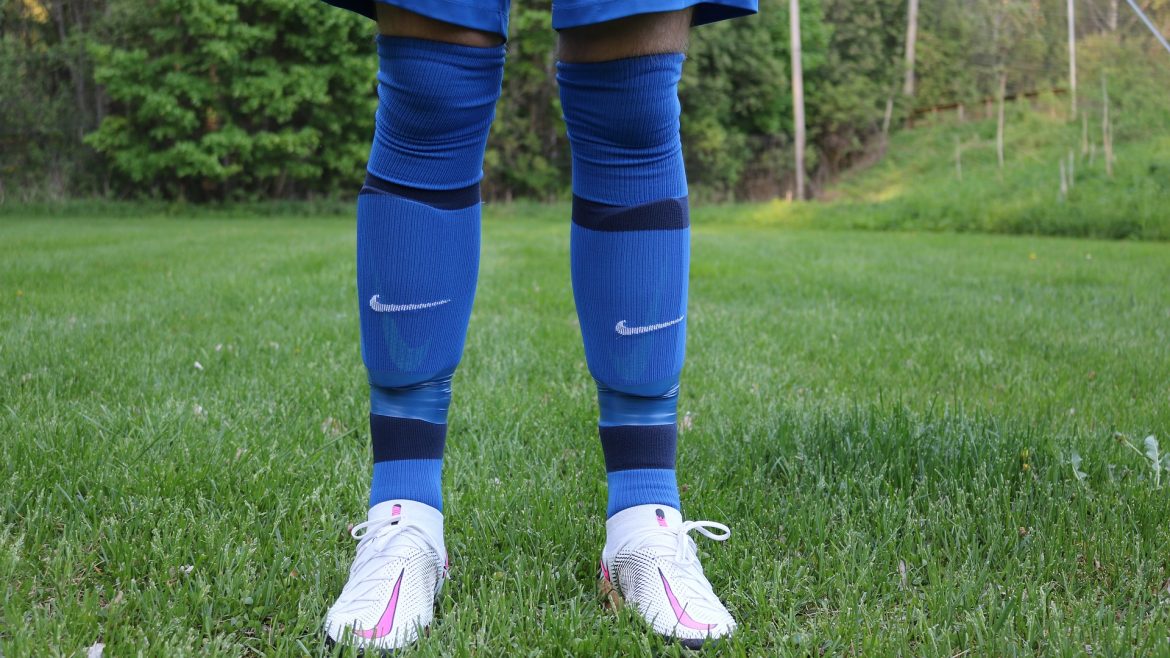How to find the best goalkeeper boots for your foot shape and size
Goalkeepers are a special breed of football players. They need to be agile, explosive, and comfortable with the ball at their feet. They also need to wear the right boots that suit their style, foot shape, and pitch conditions. But how do you find the best goalkeeper boots for your needs? Here are some tips and recommendations to help you out.
What to look for in goalkeeper boots
When choosing goalkeeper boots, there are a few things you should consider:
- Comfort: This is the most important factor, as you don’t want to be distracted by blisters, cramps, or pain while playing. Look for boots that fit well, have a soft and supple upper, and offer enough cushioning and support. You may also want to try different sizes and widths to find the perfect fit.
- Traction: As a goalkeeper, you need to be able to move quickly and change direction in any situation. You also need to have a good grip on the ground when diving or kicking. Look for boots that have a suitable soleplate for the surface you play on, whether it’s firm ground (FG), soft ground (SG), artificial grass (AG), or turf (TF). You may also want to look for boots that have a mix of conical and bladed studs for optimal traction and stability.
- Style: While this may not affect your performance, it can affect your confidence and personality on the pitch. You may want to choose boots that match your kit, your gloves, or your personal preference. You may also want to avoid flashy or colorful boots that draw attention to your feet and make you a target for strikers.
How to find your foot shape and size
Before you buy any goalkeeper boots, you need to know your foot shape and size. This will help you avoid discomfort, injury, or poor performance. Here are some steps you can follow to measure your feet:
- Step 1: Find a piece of paper, a pen or pencil, and a ruler or tape measure.
- Step 2: Place the paper on a flat surface and stand on it with one foot. Make sure your heel is against the wall or the edge of the paper.
- Step 3: Trace the outline of your foot with the pen or pencil. Make sure you hold it perpendicular to the paper and not at an angle.
- Step 4: Repeat the process with your other foot, as they may not be the same size or shape.
- Step 5: Measure the length of your feet from the heel to the longest toe. Use the ruler or tape measure and record the measurements in centimeters or inches.
- Step 6: Measure the width of your feet at the widest part, usually across the ball of your foot. Use the ruler or tape measure and record the measurements in centimeters or inches.
- Step 7: Compare your measurements with a size chart from the brand or store you want to buy from. You may also want to check their return policy in case the boots don’t fit well.
How to find your foot shape
There are three main types of foot shapes: normal, flat, and high-arched. You can determine your foot shape by looking at your footprint or doing a wet test. Here’s how:
- Normal foot: This is the most common foot shape, where you have a moderate arch and a balanced distribution of weight. Your footprint will show your heel, ball of your foot, and a slight curve along the inside of your foot. Your wet test will show a similar pattern, with a clear gap between your heel and forefoot.
- Flat foot: This is where you have a low or no arch and tend to overpronate, meaning your foot rolls inward when you walk or run. Your footprint will show your entire foot, with little or no curve along the inside. Your wet test will show a similar pattern, with no gap between your heel and forefoot.
- High-arched foot: This is where you have a high and rigid arch and tend to underpronate, meaning your foot rolls outward when you walk or run. Your footprint will show only your heel, ball of your foot, and a thin line along the outside of your foot. Your wet test will show a similar pattern, with a large gap between your heel and forefoot.
How to choose boots based on your foot shape
Once you know your foot shape, you can choose boots that match your needs and preferences. Here are some general guidelines:
- Normal foot: You can wear most types of boots, as long as they fit well and offer enough support and cushioning. You may want to look for boots that have a medium to high arch support, a snug but not tight fit, and a flexible but not too soft soleplate.
- Flat foot: You may want to look for boots that have a low to medium arch support, a wide fit, and a stable and firm soleplate. You may also want to avoid boots that have too much cushioning or padding, as they can make your feet feel more tired or unstable.
- High-arched foot: You may want to look for boots that have a high arch support, a narrow fit, and a flexible and soft soleplate. You may also want to look for boots that have extra cushioning or padding, especially in the heel and forefoot areas, as they can help absorb shock and reduce pressure.
Conclusion
Finding the best goalkeeper boots for your foot shape and size can be challenging, but it can also be rewarding. By following these tips and recommendations, you can improve your comfort, performance, and confidence on the pitch. Remember to always try on different boots before buying them, and to break them in gradually before using them in a match. Happy saving!
